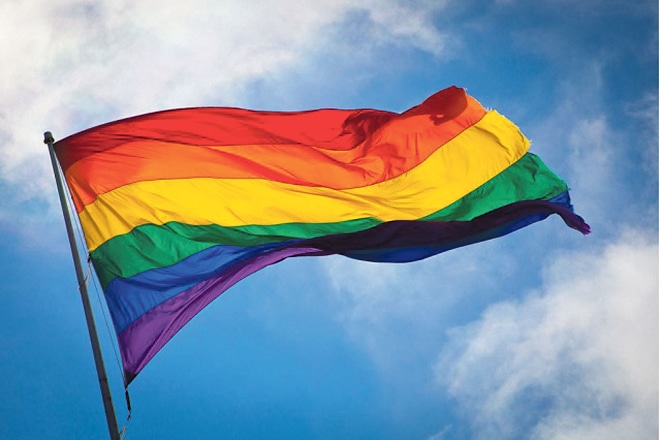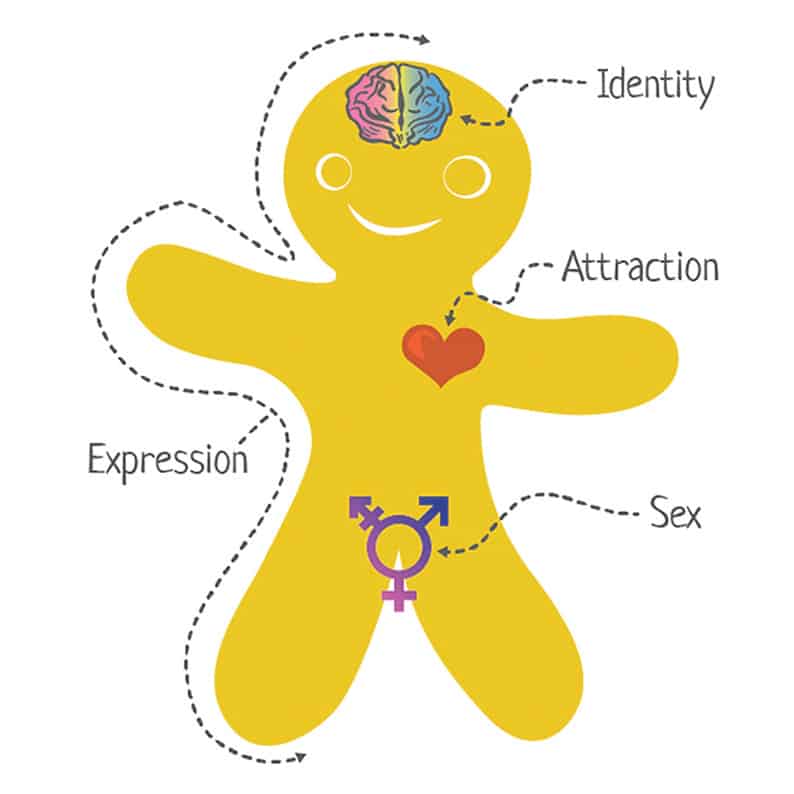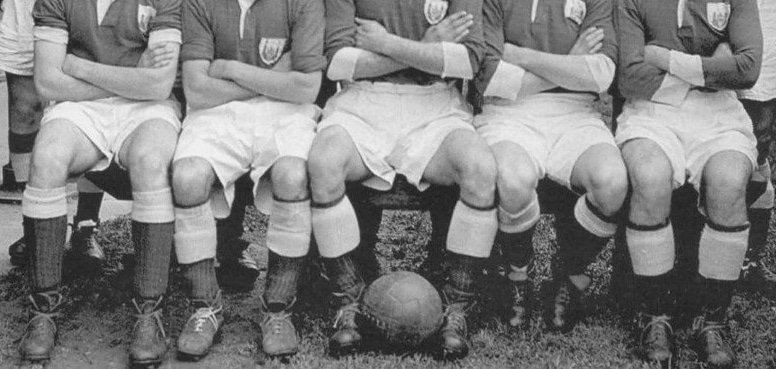The rainbow flag is a symbol used by – and associated with – the LGBTQI+ community. Lisa Brinkman explains how the different colours of the rainbow represent the many different sexual and gender identities and orientations that exist outside of the heterosexual and cisgendered norm.

In the early to mid eighties, the term ‘LGB’ was first coined as a social movement advocating for the rights and needs of lesbian, gay and bisexual people in society. Soon after, the letter ‘T’ was added to include transgender people as well. In recent years the letter ‘Q’ was added to include queer identities, as well as the letter ‘I’ for intersex people. A ‘+’ was also added to include any other gender or sexual identities under the umbrella of the community.
Throughout the month of December 2020, BROD ran a ‘terminology advent calendar’ on our social media, each day explaining a different term relevant to the LGBTQI+ community, which was incredibly well-received. Many people (inside and outside of the LGBTQI+ community) weren’t familiar with some of the terms and welcomed our definitions and explanations. In this month’s column, we would like to give an overview of some of the terminology, abbreviations, and language used in regard to the LGBTQI+ community and hopefully further peoples understanding some more.
So let’s start at the very beginning and look at the terms ‘sexual orientation’ and ‘gender identity’:

Sexual orientation refers to who one is sexually and romantically attracted to. If one is attracted to people from the opposite sex, we speak of heterosexuality.
Being attracted to people of the same sex is called homosexuality. People who are attracted to both men and women are termed bisexual.
A relatively new addition to the list of sexual orientations is pansexuality. Pansexuality refers to being romantically and sexually attracted to a person based on their personality, independent of their gender. To a pansexual person the gender of their partner isn’t relevant, meaning they could be male, female, transgender, non binary, gender queer, etc.
Another recent addition are the terms ‘asexuality’ and ‘aromantic’, which refer to people who don’t feel a sexual or romantic attraction to any other person.
Gender Identity refers to what gender we identify with. To understand Gender Identity fully, we need to first distinguish between the term gender and sex. In this context, sex refers to the biological sex of a person, which is determined by chromosomes, hormones and internal and external genitalia. In most cases, these are either typical male or typical female.
The term gender refers to how people feel and express their femininity or masculinity and is far more individually and socially constructed.
People who’s biological sex and gender are in alignment and who identify with the sex they were born in are called cis-gender. People who feel that they were born in the wrong body and their gender doesn’t align with their biological sex are called trans-gender.
Many transgender people start a process called transitioning, in which they change from living in their biological sex to living in the gender they identify with. For most transgender people this means transitioning from male to female or from female to male. This transitioning is mainly a social and psychological process, but is also often assisted by medical interventions such as hormone treatment and surgeries.
As mentioned, most transgender people identify within the binary system of male and female and transition from one to the other. However, some transgender people don’t identify with their biological sex (either male or female) but don’t necessarily identify with the opposite gender either but identify outside of the binary system. These people identify as non-binary, a-gender, gender queer or gender-fluid.
Intersex is a category of its own and is neither a sexual orientation nor a gender identity. It is far more an umbrella term for a multitude of different medical conditions, in which the biological sex characteristics of a person don’t all correspond to either male or female.
As mentioned earlier, our biological sex is determined through our chromosomes, hormones and internal and external genitalia.
For an intersex person, these don’t always all align in the typical male or female way and can be both or neither.
The ‘Q’ in the LGBTQI+ stands for ‘queer’ and is mainly an umbrella term for anyone who identifies outside of the hetero- and cis-norm. Sometimes, the ‘Q’ is also interpreted as ‘questioning’, referring to a person who may be questioning their sexual orientation and gender without fully identifying with any category or term (yet).
The growing number of terminology and abbreviations added to the LGBTQI+ umbrella is not so much a sign that the number of people identifying as LGBTQI+ is significantly increasing.
It is far more an indicator that we as a society are creating more openness and safety for people to name and express their inner and outer realities.
There is still a lot more work to be done, but we are definitely on a good trajectory.
To find out more about anything LGBTQI+ related or what we are up to, follow us on our Facebook and Instagram page.



